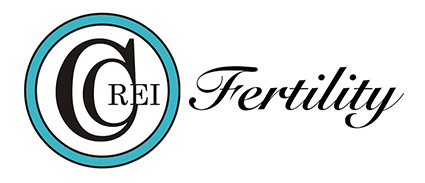In Vitro Fertilization (IVF)
Providing Advanced Fertilization Treatment with a Warm Personal Touch
Overview
As of recent statistics, it’s estimated that over 8 million children have been born worldwide through in vitro fertilization (IVF) procedures since the technique was first successfully used in 1978. IVF has become increasingly common as advancements in reproductive technology have improved success rates and accessibility. However, exact current numbers can vary year by year and region by region due to differences in reporting and healthcare systems.
IVF is a complex process with many steps that must be successful in order to maximize the chance of conceiving. The steps are as follows:
Pre-Treatment
Before any treatment is begun, you will meet with Dr. Thiruppathi and complete a thorough screening. The initial examination will include a full medical history and prescriptions for a variety of tests, which may consist of a blood test, ultrasound, uterine imaging (hysterosalpingogram or HSG, hysteroscopy, hysterosonogram), or other exams. These tests are done to detect fibroids, endometriosis, tumors, infectious disease, hormone levels and other potential problems. The male partner may also be asked to undergo semen analysis to assess sperm count and health.
Your doctor will also tell you about ways to increase your chance of conceiving during the initial IVF stages. This includes instructions about diet, nutritional supplements, exercise and weight loss, and sexual behavior as well as a recommendation to avoid tobacco, alcohol, caffeine, and certain medications.
When these tests have been completed and the results examined, you and your partner will meet with the physician and nurse. At this time, the details of the treatment plan will be explained and scheduled, and any questions and concerns you have will be addressed. You will be asked to sign all necessary consent forms.
Ovulation Induction
A woman’s body normally produces one egg per ovulation cycle. However, if more eggs can be collected and fertilized in one cycle, there will be more viable embryos to select from, and thus a greater chance of conception. For this reason, prior to egg retrieval the ovaries are carefully stimulated to produce more eggs than usual. This process is known as superovulation.
Superovulation is achieved through a series of injections of special medications that regulate the menstrual cycle by adjusting the levels of certain chemicals in the body. These include:
- GnRH agonists, or gonadotropin-releasing hormone agonists — Stimulate high-quality egg production and help prevent mid-cycle increases in estrogen levels. (Lupron)
- GnRH antagonists — Prevent premature ovulation. (Antagon, Cetrotide)
- FSH, or follicle stimulating hormones, and LH, or luteinizing hormones — Stimulate egg-producing follicles in the ovaries. (Gonal-F; Menapur)
- hCG, or human chorionic gonadotropins — Prepare eggs for harvesting (Novarel, Ovidrel).
- Progesterone in Oil injections to prepare for implantation.
There are some risks associated with these treatments, including side effects from the injection itself (bruising, swelling, tenderness or infection), allergic reaction, and excessive or insufficient response from the ovaries. Increased estrogen levels may cause fluid retention, weight gain, nausea, diarrhea, breast tenderness, moodiness, headache or fatigue. A rare but possible complication is ovarian hyperstimulation syndrome (OHSS), in which estrogen levels rise sharply and the ovaries produce too many eggs, potentially causing excessive fluid retention, thrombosis and enlarged ovaries. OHSS is a serious condition that requires hospitalization.
Egg Retrieval
The next step in IVF is the retrieval of the eggs (oocytes) from the ovaries. Retrieval takes about 30 minutes under IV sedation. An ultrasound-guided needle is inserted into the ovary, where multiple eggs and fluid are removed. the eggs are individually removed and prepared for sperm injection in the laboratory. Some soreness, cramping or spotting is normal after the procedure but recovery is fairly quick and discharge from the clinic in about an hour. After retrieval the woman may be asked to take progesterone supplements for preparation for embryo transfer in 5-6 days or the embryos will be tested for genetic abnormalities (aneuploidies) and frozen to be transferred at a later date.
Fertilization and Transfer
Depending on the specific fertilization and transfer procedure chosen, the best candidates from among the eggs harvested may then be fertilized using a procedure called intracytoplasmic sperm injection (ICSI). The fertilization rate is about 70%, which means that 70% of the eggs retrieved will typically fertilize. The sperm is collected from the male partner on the day of retrieval or from a donor. The embryos are cultured in special media to allow them to develop to the blastocyst stage (5-6 days). At this point the best two embryos will be selected for transfer into the uterus. Most patient will opt to test the embryos genetically prior to transfer at a later date once the genetic disposition is known. Any untransferred embryos or eggs may be frozen and stored for later use or donation.
Pregnancy

About two weeks after retrieval and transfer, a blood sample is taken to measure levels of the “pregnancy hormone” hCG and determine whether the pregnancy has been successful so far. A second blood test two days later is required to confirm a positive result. At this time the pregnancy is called a chemical pregnancy. Ultrasound images taken two weeks and four weeks later indicate whether a gestational sac has formed in the uterus around the developing embryo. This is known as a clinical pregnancy.
Pregnant patients will continue to take progesterone supplements and follow an individualized treatment plan. If the test is negative, progesterone is stopped and the patient should have a regular period within 5 days. Follow-up visits will be scheduled with the physician and a counselor so couples can discuss their feelings and options.
After 10 weeks patients are referred to an OB/GYN for the remainder of the pregnancy.
Treatment Timeline
Every patient is different. Accordingly, IVF treatment plans are tailored to each individual. With this in mind, below is an outline of what to expect during a typical IVF cycle. The average time from the start of pre-cycle testing to the embryo transfer is 6 to 10 weeks.


Follow Us!